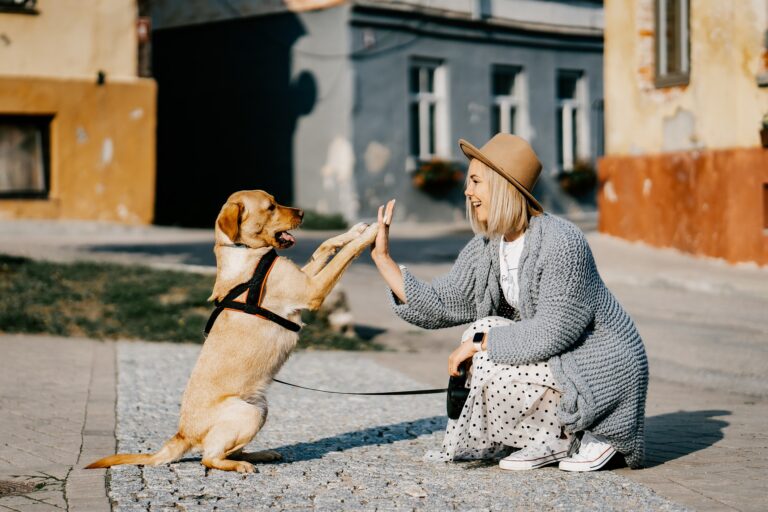Bringing a dog into your life as a first-time owner is an exciting and rewarding journey. However, it also comes with responsibilities and challenges. To ensure a smooth transition into dog parenthood, it’s essential to be well-prepared. In this article, we’ll provide valuable tips for first-time dog owners, covering everything from choosing the right breed to establishing a loving and healthy relationship with your new furry friend.
Choose the Right Breed: Research and select a breed that matches your lifestyle and living situation. Different breeds have varying exercise needs, temperaments, and grooming requirements. Ensure that the breed you choose aligns with your daily routine and expectations.
Adopt from a Shelter: Consider adopting from a local animal shelter or rescue organization. There are countless dogs in need of loving homes, and adopting can be a fulfilling experience. You might just find your perfect match waiting for you.
Prepare Your Home: Preparing your home for a new dog is crucial to ensure their safety and well-being. Here’s a more detailed explanation of how to dog-proof your home and set it up for your new furry family member:
Remove Hazards: Dogs are naturally curious and can get into trouble if they encounter hazards. Walk through your home and identify potential dangers. Some common hazards include small objects that can be swallowed, toxic plants, chemicals, and sharp items. Remove or secure these items to prevent accidents.
Toxic Substances: Ensure that all toxic substances are stored securely out of your dog’s reach. This includes cleaning products, medications, pesticides, and certain foods like chocolate, grapes, and onions, which can be toxic to dogs. Use childproof locks or cabinets with latches if necessary.
Electrical Cords: Dogs may chew on electrical cords, posing a risk of electrocution or injury. Use cord covers or conceal cords behind furniture to keep them out of your dog’s sight and reach. You can also use bitter-tasting sprays on cords to deter chewing.
Dangerous Areas: Block off access to dangerous areas of your home, such as staircases or rooms with potential hazards. Baby gates can be useful for restricting access while allowing your dog to move freely in safer areas.
Pet Supplies: Invest in essential pet supplies to meet your dog’s needs. These include:
Food and Water Bowls: Choose sturdy, non-tip bowls that are appropriate for your dog’s size. Stainless steel or ceramic bowls are easy to clean and less likely to harbor bacteria.
Collar and Leash: A well-fitting collar with an identification tag and a comfortable leash are essential for walks and outings. Ensure the collar is not too tight or too loose.
Toys: Dogs need mental and physical stimulation. Provide a variety of toys to keep your dog engaged and prevent boredom. Toys also help with teething and can alleviate anxiety.
Comfortable Bed: A comfortable and appropriately sized bed or crate provides your dog with a cozy and secure space to rest. Place it in a quiet area of your home.
Dog Food: Choose high-quality dog food that meets your dog’s nutritional needs based on their age, size, and activity level. Consult with your veterinarian for dietary recommendations.
Waste Management: Decide where your dog will relieve themselves. If you have a yard, designate an area for this purpose and keep it clean. If you live in an apartment, be prepared with appropriate waste disposal bags for walks.
Training Supplies: If you plan to train your dog, gather training supplies like treats, a clicker, and training aids. Positive reinforcement training methods can be highly effective in teaching your dog commands and good behavior.
Veterinary Care: Schedule a veterinary check-up as soon as you bring your new dog home. Establish a regular vaccination and wellness care schedule, and discuss options for spaying or neutering with your veterinarian.
Training and Socialization: Enroll your dog in a basic obedience training class. Proper training not only helps with behavior but also strengthens the bond between you and your dog. Socialize your dog with other pets and people to ensure they become well-adjusted and friendly.
Nutritious Diet: Consult your veterinarian to choose a high-quality dog food that suits your dog’s age, size, and specific dietary needs. Avoid feeding your dog human food, as some items can be toxic to dogs.
Regular Exercise: Dogs need regular exercise to stay healthy and happy. Make daily walks, playtime, and mental stimulation a part of your routine. The right amount of exercise varies by breed, so research your dog’s specific requirements.
Grooming: Grooming needs vary among breeds. Brush your dog regularly to prevent matting and shedding, and bathe them as needed. Pay attention to dental care by brushing your dog’s teeth or providing dental chews to maintain oral health.
Establish Routine: Dogs thrive on routines. Set a consistent schedule for feeding, bathroom breaks, exercise, and bedtime. This helps your dog feel secure and reduces anxiety.
Patience and Love: Building a strong bond with your dog takes time. Be patient and understanding as your dog adjusts to their new home. Use positive reinforcement and reward-based training methods to foster trust and love.
Health Monitoring: Pay attention to your dog’s health. Regularly check for signs of illness, injury, or discomfort. If you notice any unusual behaviors or symptoms, consult your veterinarian promptly.
Legal Responsibilities: Familiarize yourself with local dog ownership laws and regulations. Ensure your dog is licensed and up-to-date on vaccinations as required by your municipality.
Conclusion:
Owning a dog for the first time is a rewarding experience that comes with responsibilities and commitment. By choosing the right breed, preparing your home, providing proper care, and fostering a loving relationship, you can embark on a fulfilling journey as a responsible dog owner. Remember that every dog is unique, so tailor your care and attention to your furry friend’s individual needs, and cherish the many joyful moments you’ll share together.


